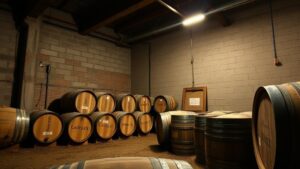Mapping Abandoned Silversmith Workshops for Craft Tool Discoveries
Mapping Abandoned Silversmith Workshops for Craft Tool Discoveries
The preservation of cultural heritage is a critical endeavor, particularly in the context of traditional crafts such as silversmithing. This research article explores the significance of mapping abandoned silversmith workshops as a method for unearthing historic craft tools and understanding artisanal practices. Employing geographic information systems (GIS), this study aims to analyze spatial distributions and current conditions of these workshops, particularly in regions with a rich history of silversmithing, such as Colonial America and 19th-century Europe.
Historical Context of Silversmithing
Silversmithing, a craft that dates back to ancient civilizations, experienced significant development during the 16th to 19th centuries in Europe and the Americas. Notable locations include:
- London, England, known for the establishment of notable silversmith guilds in the 1600s.
- New England, where silversmithing played a critical role in the colonial economy, with artisans like Paul Revere prominently featured.
- Germany, which was a center for silver trade and craftsmanship, particularly in cities such as Augsburg and Nuremberg.
Historically, silversmith workshops served not only as production spaces but also as cultural hubs where artisans shared knowledge and techniques. The decline of silversmithing due to industrialization in the 19th century has resulted in numerous abandoned workshops, many of which remain unexplored.
Objectives of the Study
This research aims to achieve the following objectives:
- To identify and inventory abandoned silversmith workshops across selected geographical regions.
- To analyze the potential for discovering craft tools and artifacts in these locations.
- To assess the historical significance of discovered artifacts in understanding the evolution of silversmithing techniques.
Methodology
The study employs a mixed-methods approach, integrating GIS technology for mapping and field surveys for artifact recovery. The steps include:
- Data Collection: Existing historical records, city directories, and archival materials will be compiled to identify former silversmith locations.
- Geospatial Mapping: GIS techniques will be utilized to create detailed maps highlighting the geographic distribution of these workshops.
- Field Surveys: Physical inspections will be conducted at various sites to locate and document any remaining tools or workshop structures.
- Artifact Analysis: Identified tools will undergo analysis to determine their historical context and relation to known silversmithing practices.
Significance of Craft Tool Discoveries
The discoveries of craft tools in abandoned workshops provide invaluable insights into historical practices. A notable example is the recovery of a set of annealing trays from a workshop in Taunton, Massachusetts, which shed light on local silversmithing techniques in the early 1800s. Such findings can lead to:
- Enhanced understanding of the material culture and technical methods of artisans.
- Insights into trade networks and resource usage within historical contexts.
- Conservation efforts aimed at preserving remaining structures and practices.
Case Studies
Several case studies illustrate the potential benefits of this mapping initiative:
- The Silversmiths’ Guild of London: By analyzing workshop locations, researchers uncovered the spatial distribution of craftsmen and their influence on local economies.
- Preservation Efforts in New England: Mapping abandoned workshops in the 19th century has revealed significant artifacts, prompting revitalization projects aimed at educating future generations.
Conclusion and Future Directions
The mapping of abandoned silversmith workshops offers a promising avenue for historical research and cultural preservation. Future studies should consider the integration of advanced technologies such as remote sensing and ground-penetrating radar to enhance artifact recovery potential. Also, community involvement can be instrumental in promoting awareness and appreciation of silversmithing heritage.
Ultimately, as the craft continues to wane in many regions, efforts to catalog and study these workshops may provide critical knowledge that helps to preserve an essential aspect of artisanal history.


